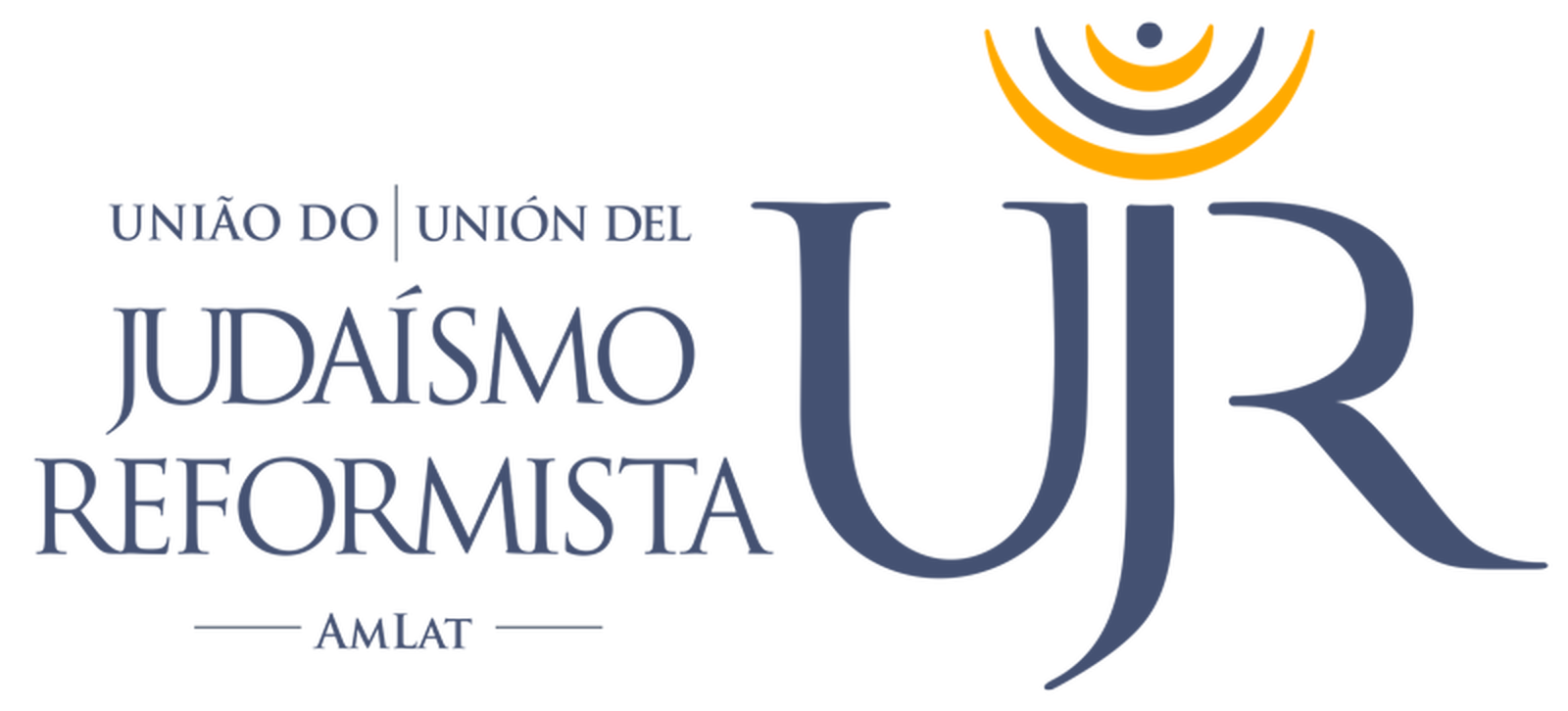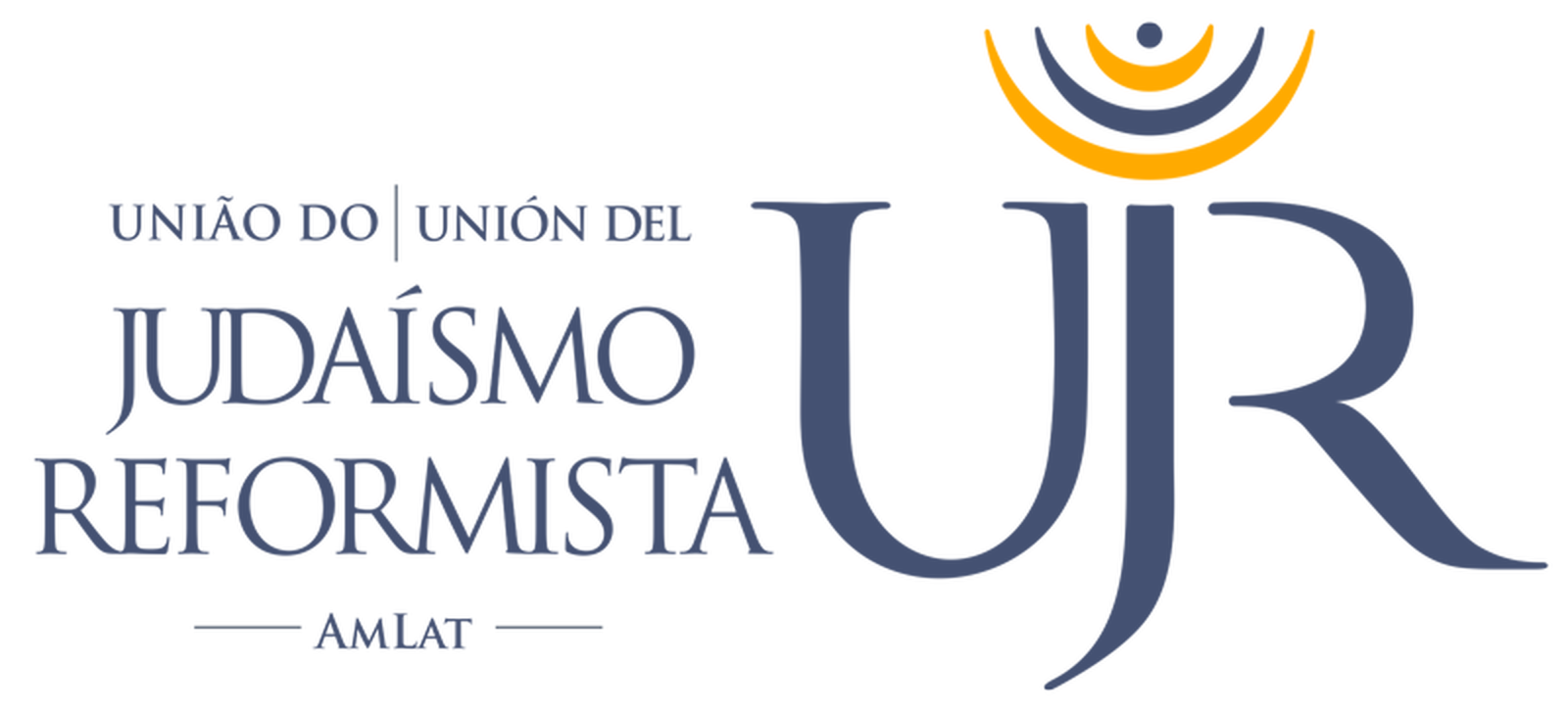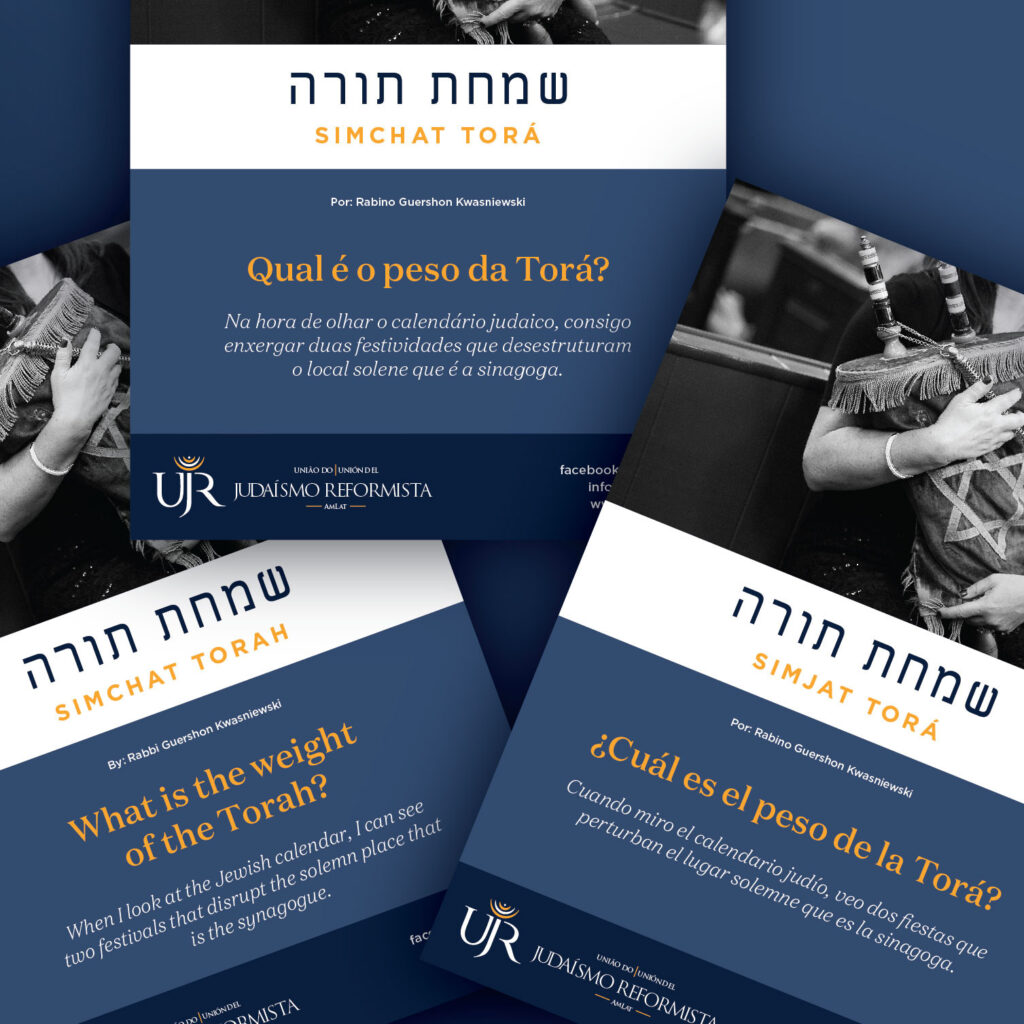Simchat Torah
שמחת תורה
October 7-8, 2023
23rd of Tishrei 5784
Rabbi Guershon Kwasniewski
What is the weight of the Torah?
When I look at the Jewish calendar, I can see two festivals that disrupt the solemn place that is the synagogue. On the one hand, Purim, a date on which we arrive in costume at our temples and make a deafening noise when we hear the word Haman at the time of the reading of the Meguilah. On the other hand, the restrained movements when praying during the Hakafot of Simchat Torah give way to dances and choreographies with our most sacred book.
The informal lives with the formal, as in life itself.
A popular, joyous and hectic festival contrasts with a densely spiritual, introspective and profound period.
The weight of the Torah, which was exhausting during the Yamim Noraim, suddenly becomes so light that even children are invited to carry it and dance with it.
I honestly think that what is light is our soul after it has been examined by the Creator.
The Talmud only calls Sukkot by the word Chag (Feast). There’s nothing better than ending the biggest festive period feeling so close to the Torah, with Simcha (joy).
If we had to make a history of our relationship with the Torah, what would we include in our memories?
I’d start with my childhood, when my parents would take me to synagogue and I’d get a small Keren Kayemet flag with an apple and a candle on the end. Continuing with childhood memories, to this day there is a custom at SIBRA – a community founded by German Jews – brought over by the immigrants, which consists of forming a large circle of adults, while inside there are only children dancing with the Torot and a small bag, which is filled with goodies for the joy of the little ones.
Another beautiful memory in relation to the Torah is what we’ve experienced at the recent Connections – events organized by the WUPJ in Jerusalem, where the larger communities donate a Torah to the smaller synagogues or the newly created ones. This transfer generates a lot of emotion, since behind this new Torah will begin the community life of an institution linked to our Progressive movement.
To think of the Torah is to see it as a symbol by which we are recognized and respected. It is our most sacred text that transcends Judaism, has been incorporated and is studied by other religions as well. When the Torah was not respected and its scrolls were burned, the Jews ended up suffering the same fate as their books.
Of course, we should also remember the countless parshanim (exegetes) who interpreted it. All of them ended up making a great contribution so that we could deepen our knowledge. His methodology of study via Pardes, generated different ways of analyzing and understanding it. The word Pardes literally means “orchard”. In turn, it is an acrostic of the words “Pshat, Remez, Drash and Sod” (literal, suggestive, philosophical and occult). This is the rich and deep path we rabbis approach to find the best interpretations.
Whether you read them by their annual cycle or by their three-year cycle, the parashiot have found their prominent place in the Bar and Bat Mitzvah ceremonies on our premises. The name of the weekly portion will be etched forever in the memory of those who performed the ceremony, just like the t’amim – musical punctuation – this melody will accompany us for the rest of our lives. It’s such a sacred book that when its parchment is in a bad state and can’t be recovered, it ends up being buried. From all these considerations we can see the prominent place that the Torah occupies in our lives, so when we dedicate a day to it, we should celebrate it very much.
Chag Sameach!
Rabbi Guershon Kwasniewski
SIBRA and WUPJ Board representative for Latin America





